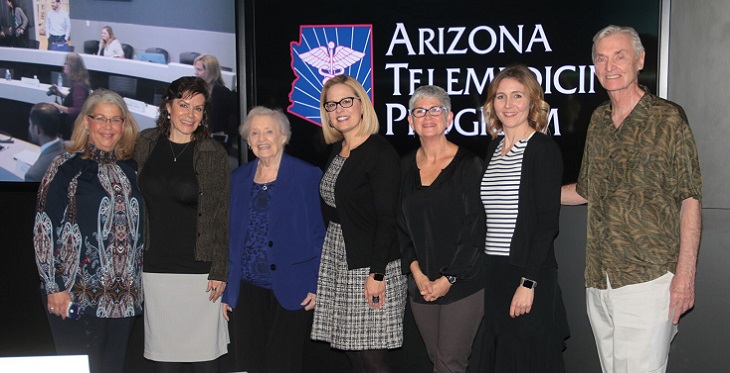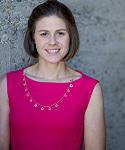How Northern Arizona is paving the way for remote monitoring to change the face of health care

In Navajo County, Arizona, Manuel Ono and his wife, Lola, sat down with me last year to tell me about their lives, and how, in their remote and beautiful corner of northern Arizona, they stay connected to the world. The Onos, lifelong residents of Winslow, have been married for over 30 years and are now happily retired, spending many of their days looking after their grandkids. But like almost half of all adults in the U.S., Manuel has multiple chronic health conditions. He is diabetic and is also being treated for congestive heart failure.
Diabetes and heart failure are just two examples of the myriad of complex conditions that send people to the hospital, keep them from the comfort of their homes and loved ones and place a large strain on our country’s over-burdened, under-resourced health care system. Thankfully for the Onos and many others like them, important technological advances and innovative public-private collaborations are helping to combat this issue, enabling patients to easily take their health care into their own hands.
Last month, the T-Health Institute in Phoenix hosted a panel discussion on the success and expansion of the Care Beyond Walls and Wires™ (CBWW) program, a collaboration between Qualcomm® Wireless Reach™, Northern Arizona Healthcare (NAH), Qualcomm Life, Inc. and CRF Health that does just that. Established in 2011, CBWW is a cutting-edge digital health remote monitoring program aimed at increasing access to care and improving outcomes for patients suffering from chronic disease and other conditions. The panel discussion was attended by U.S. Congresswoman Kyrsten Sinema, who offered opening remarks and interacted with CBWW program staff, beneficiaries and other state telehealth advocates, such as Arizona Corporation Commissioner and Chair of the Arizona Telemedicine Council Robert Burns.
The panel discussion was attended by U.S. Congresswoman Kyrsten Sinema, who offered opening remarks and interacted with CBWW program staff, beneficiaries and other state telehealth advocates, such as Arizona Corporation Commissioner and Chair of the Arizona Telemedicine Council Robert Burns.
As the panel discussed, over 117 million adults in the U.S. have one or more chronic health conditions, and that number is on the rise. Created to address this growing challenge, CBWW utilizes 3G/4G mobile broadband with connected home-use medical devices to enable nursing care coordinators to remotely monitor patients, focusing on the delivery of care beyond the walls of hospitals by giving patients the tools to stay connected to providers – anytime, anywhere. Many of NAH’s patients live in underserved, rural communities, including some on remote Native American reservations, where regular support provided by their care managers is crucial.
Recent research findings show that patients enrolled in the CBWW program were readmitted to the emergency department less, on average, in the six months following enrollment compared to the six months prior, and per-patient hospital charges were $92,000 less, on average, following enrollment compared to before enrollment. The program has been so successful that it is now expanding to cover more patients with other chronic or high-risk conditions, such as sepsis post-operation, pre-hypertension and chronic lung disease. The goal is to have the CBWW model replicated by hospitals nationally as the federal government advances the use of remote monitoring and reimbursement.
Mary McGuire, a CBWW beneficiary, participated in the panel and spoke about the ease with which she learned to use the medical devices and how with the support of her care managers she has been able to seamlessly integrate their use into her daily routine. Following the discussion, Congresswoman Sinema tweeted how impressed she was with the innovative combination of technology and health care delivery to improve patient quality of life.
And as for Ono, by participating in CBWW, he is empowered to play a more active role in his own health care, while at the same time benefitting from the extra care and security that remote monitoring from the hospital brings – and this powerful combination has improved his health outcomes. He told me: “Since I started using this [connected medical devices] I haven’t been back into the hospital for heart failure at all. Now that I’ve gotten used to it, I enjoy doing it. It’s good for me, because I know [the care managers] are keeping track of me”.
As a Qualcomm employee, I know that I speak on behalf of my colleagues in saying how fortunate we are to help patients manage and overcome serious health issues using our groundbreaking technologies, from next-generation wireless technologies to smart devices and health applications for patients and providers across the care continuum. We’ve only begun to scratch the surface of what is possible in this space, and we are working tirelessly to make further progress in the years ahead. Overcoming the many challenges that are inherent in health care systems around the world requires unprecedented wireless expertise, borderless connections, a global, secure infrastructure and an open ecosystem approach. All of which are core to our DNA.
I would also like to thank the great team at T-Health for hosting this insightful discussion. Qualcomm looks forward to continued collaboration with each of these groups to ensure patients have the care they need – anytime, anywhere.
